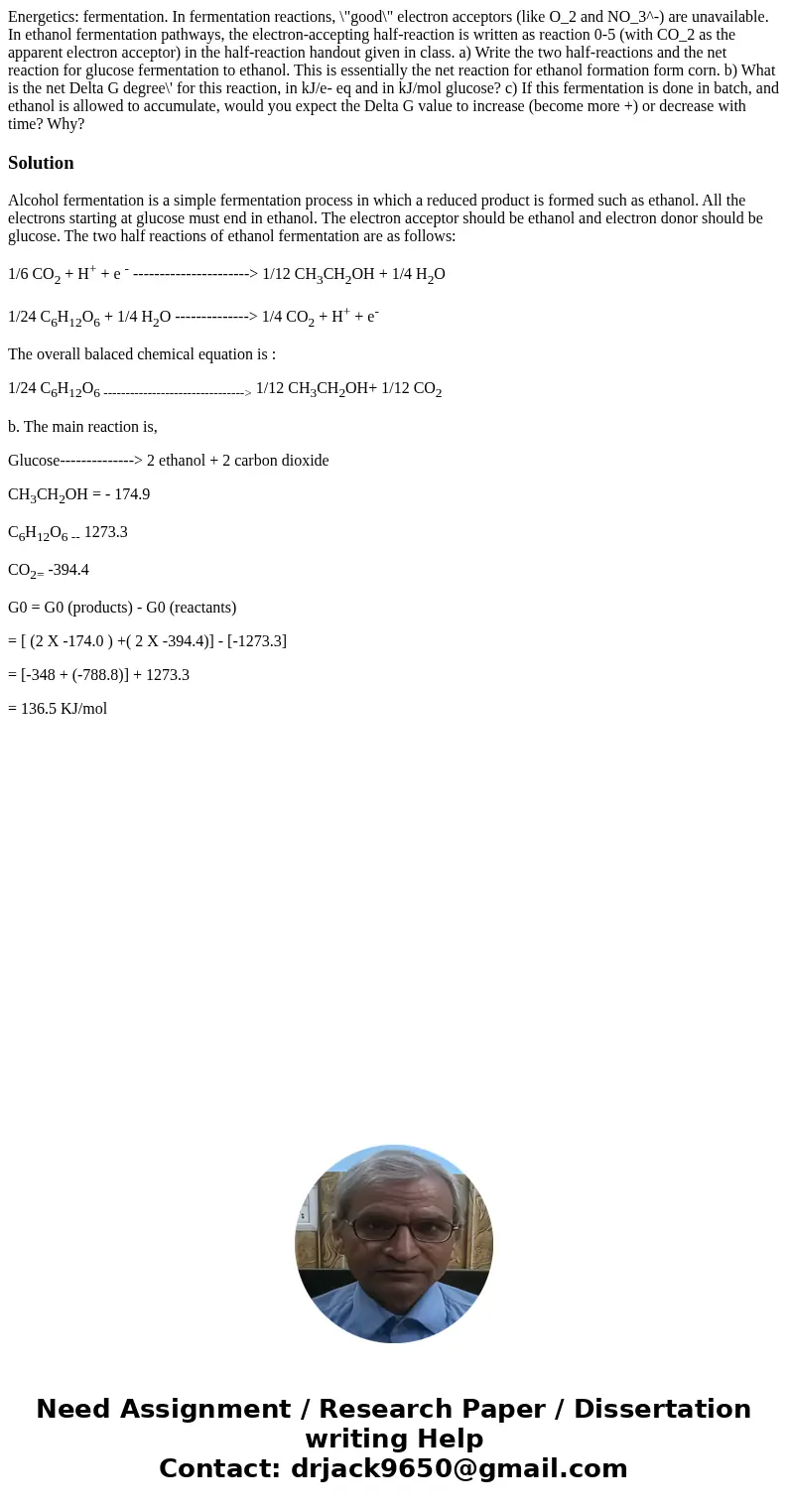Energetics fermentation In fermentation reactions good elect
Solution
Alcohol fermentation is a simple fermentation process in which a reduced product is formed such as ethanol. All the electrons starting at glucose must end in ethanol. The electron acceptor should be ethanol and electron donor should be glucose. The two half reactions of ethanol fermentation are as follows:
1/6 CO2 + H+ + e - ----------------------> 1/12 CH3CH2OH + 1/4 H2O
1/24 C6H12O6 + 1/4 H2O --------------> 1/4 CO2 + H+ + e-
The overall balaced chemical equation is :
1/24 C6H12O6 --------------------------------> 1/12 CH3CH2OH+ 1/12 CO2
b. The main reaction is,
Glucose--------------> 2 ethanol + 2 carbon dioxide
CH3CH2OH = - 174.9
C6H12O6 -- 1273.3
CO2= -394.4
G0 = G0 (products) - G0 (reactants)
= [ (2 X -174.0 ) +( 2 X -394.4)] - [-1273.3]
= [-348 + (-788.8)] + 1273.3
= 136.5 KJ/mol

 Homework Sourse
Homework Sourse